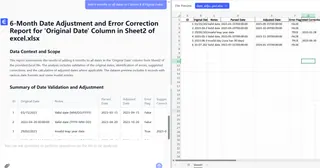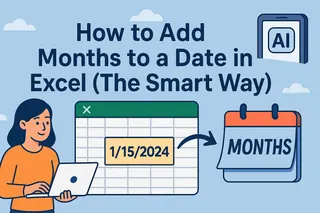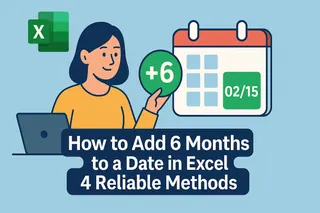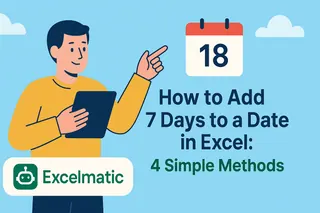As a User Growth Manager at Excelmatic, I constantly see professionals struggling with date calculations in Excel—especially when projecting deadlines, contract renewals, or financial forecasts. While Excel's built-in functions work, there are smarter ways to handle these tasks today.
Why Date Math Matters in Business
Excel stores dates as serial numbers (January 1, 1900 = 1), enabling basic arithmetic. Adding days is simple (=A1+30), but months require special handling due to varying month lengths. This is where most spreadsheets break—unless you use the right tools.
The EDATE Method: Excel's Native Solution
The EDATE function is Excel's dedicated tool for month calculations:
=EDATE(start_date, months)
Practical Example:
To add 6 months to March 15, 2023 (cell A2):
=EDATE(A2, 6) → Returns September 15, 2023
how-to-add-6-months-to-a-date-1
Pro Tip: Use negative numbers to subtract months (=EDATE(A2, -3)).
Common EDATE Pitfalls
- #VALUE! Errors: Ensure your input is a valid Excel date
- Blank Cells: EDATE fails if
start_dateis empty - Formatting: Results may display as serial numbers—apply Date formatting
Beyond EDATE: AI-Powered Date Automation
While EDATE works for simple cases, modern teams need smarter solutions. This is where Excelmatic transforms the game:
- Natural Language Processing: Describe what you need ("Add 6 months to these contract dates") instead of writing formulas
- Batch Processing: Automatically apply calculations across entire columns
- Error Prevention: AI detects invalid dates and suggests corrections
- Dynamic Adjustments: Easily modify time periods without rewriting formulas

Example Workflow in Excelmatic:
- Upload your spreadsheet
- Type: "Create a new column showing each date +6 months"
- Excelmatic generates perfect results instantly
When to Use Each Approach
| Scenario | EDATE | Excelmatic |
|---|---|---|
| One-time calculation | ✓ | ✓ |
| Recurring reports | ✗ | ✓ |
| Large datasets | ✗ | ✓ |
| Non-technical users | ✗ | ✓ |
| Complex date logic | ✗ | ✓ |
Advanced Date Management Tips
For teams handling dates regularly:
- Conditional Formatting: Highlight dates crossing fiscal quarters
- Data Validation: Restrict date entry formats
- AI-Assisted Forecasting: Use Excelmatic to predict timelines based on historical patterns
The Future of Date Calculations
Gone are the days of manual formula tweaking. With AI tools like Excelmatic, you can:
- Generate date projections from voice commands
- Sync calculations across multiple files
- Get smart suggestions ("These dates cross holiday periods—adjust?")
Try This Now:
Upload your spreadsheet to Excelmatic and type "Show me all dates shifted forward 6 months with conditional formatting for Q3/Q4." Watch the magic happen.
Whether you stick with EDATE or upgrade to AI automation, accurate date math is now easier than ever. The key is choosing the right tool for your workflow complexity and frequency.






